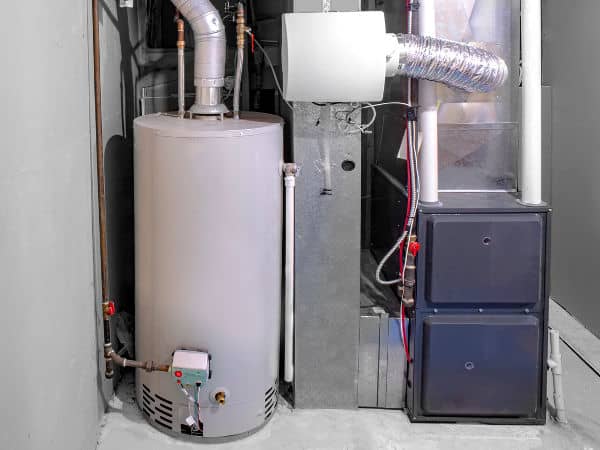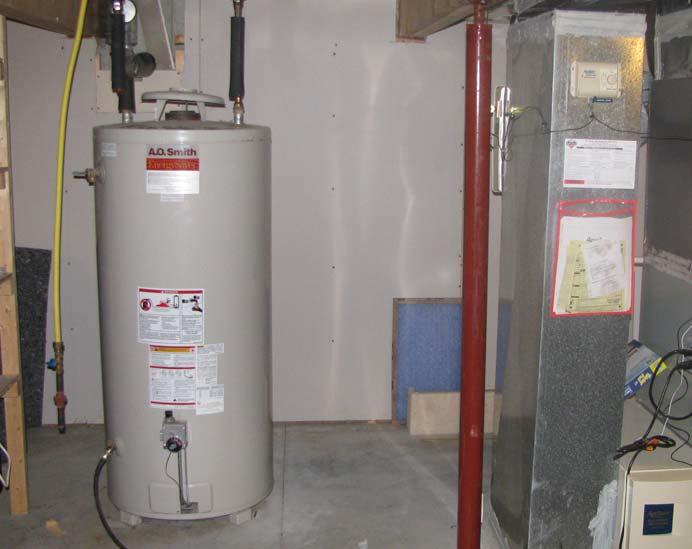We've stumbled upon this great article about What Kind of Maintenance Do Water Heaters Need? down the page on the internet and think it made good sense to relate it with you on this page.

Warm water is vital for daily convenience, whether it's for a rejuvenating shower or washing recipes. To ensure your warm water system runs effectively and lasts longer, routine upkeep is crucial. This article offers practical ideas and insights on just how to preserve your home's warm water system to prevent disruptions and expensive repairs.
Intro
Maintaining your home's warm water system might seem complicated, yet with a few straightforward steps, you can ensure it runs smoothly for several years to find. This overview covers whatever from recognizing your hot water system to do it yourself maintenance ideas and knowing when to employ professional assistance.
Importance of Keeping Your Hot Water System
Regular upkeep not only prolongs the life-span of your hot water system yet also ensures it runs efficiently. Ignoring upkeep can lead to reduced performance, higher energy expenses, and also premature failure of the system.
Indicators Your Hot Water System Demands Maintenance
Recognizing when your hot water system requires interest can protect against major problems. Look out for indications such as irregular water temperature, odd noises from the heater, or rustic water.
Purging the Water Heater
Purging your water heater eliminates sediment accumulation, boosting efficiency and extending its life.
Monitoring and Replacing Anode Rods
Anode poles protect against rust inside the tank. Checking and changing them when worn out is important.
Complex Problems Calling For Professional Assistance
Instances include significant leakages, electrical problems, or if your water heater is regularly underperforming.
Regular Specialist Upkeep Conveniences
Expert upkeep can consist of detailed inspections, tune-ups, and guaranteeing conformity with safety and security standards.
Examining and Changing Temperature Level Settings
Adjusting the temperature setups makes certain optimal performance and security.
Do It Yourself Tips for Maintenance
You can carry out numerous upkeep tasks on your own to maintain your warm water system in top condition.
Checking for Leakages
Consistently inspect pipes and links for leakages, as these can bring about water damages and higher bills.
Understanding Your Hot Water System
Prior to diving right into upkeep tasks, it's helpful to recognize the standard parts of your warm water system. Usually, this includes the hot water heater itself, pipelines, anode poles, and temperature level controls.
Regular Monthly Maintenance Tasks
Routine regular monthly checks can help catch small concerns prior to they intensify.
Evaluating Pressure Relief Valves
Evaluating the pressure relief valve ensures it functions correctly and prevents excessive pressure buildup.
Insulating Pipes
Protecting hot water pipes reduces heat loss and can conserve energy.
When to Call an Expert
While DIY maintenance is beneficial, some concerns call for specialist know-how.
Verdict
Routine maintenance of your home's warm water system is vital for effectiveness, longevity, and cost financial savings. By complying with these suggestions and recognizing when to look for specialist assistance, you can ensure a trusted supply of hot water without unanticipated interruptions.
How to Maintain an Instant Hot Water Heater
Before tinkering with your hot water heater, make sure that it’s not powered on. You also have to turn off the main circuit breaker and shut off the main gas line to prevent accidents. Also turn off the water valves connected to your unit to prevent water from flowing into and out of the appliance. 2. When you’re done, you have to detach the purge valves’ caps. These look like the letter “T” and are situated on either side of the water valves. Doing so will release any pressure that has accumulated inside the valves while at the same time avoid hot water from shooting out and burning your skin. 3. When the purge valves’ caps are removed, you have to connect your hosing lines to the valves. Your unit should have come with three hoses but if it didn’t, you can purchase these things from any hardware or home repair shops. You can also get them from retail stores that sell water heating systems. Read the user’s manual and follow it to complete this task properly. When the hosing lines are connected, open the purge port’s valves. 4. You should never use harsh chemical cleaners or solutions when cleaning your unit. Make use of white vinegar instead. It should be undiluted and you’ll probably use about 2 gallons. 5. Now flush your water heater. This task should probably take about 40 minutes. We can’t give you specific directions for this because the procedure is carried out depending on the type, model and brand of your heater. With that being said, refer to the user’s manual. 6. When you’re done draining the unit, you have to turn off the purge port valves again. Remove the hosing lines that you earlier installed on each of the water valves. Put the valve caps (purge port) back in their respective places and be very careful so as not to damage the rubber discs that are found inside these caps. 7. Now that everything’s back in place, check your user’s manual again to find out how to reactivate your water heating system. 8. Once it is working, turn one of your hot water faucets on just to let air pass through the heater’s water supply pipes. Leave the tap on until water flows smoothly out of it. https://www.orrplumbing.com/blog/2014/september/how-to-maintain-an-instant-hot-water-heater/

We were made aware of that report on What Kind of Maintenance Do Water Heaters Need? from a good friend on another domain. Enjoyed our article? Please share it. Help other people check it out. I treasure reading our article about How to Maintain a Hot Water Heater in a Few Simple Steps.
Additional Resources